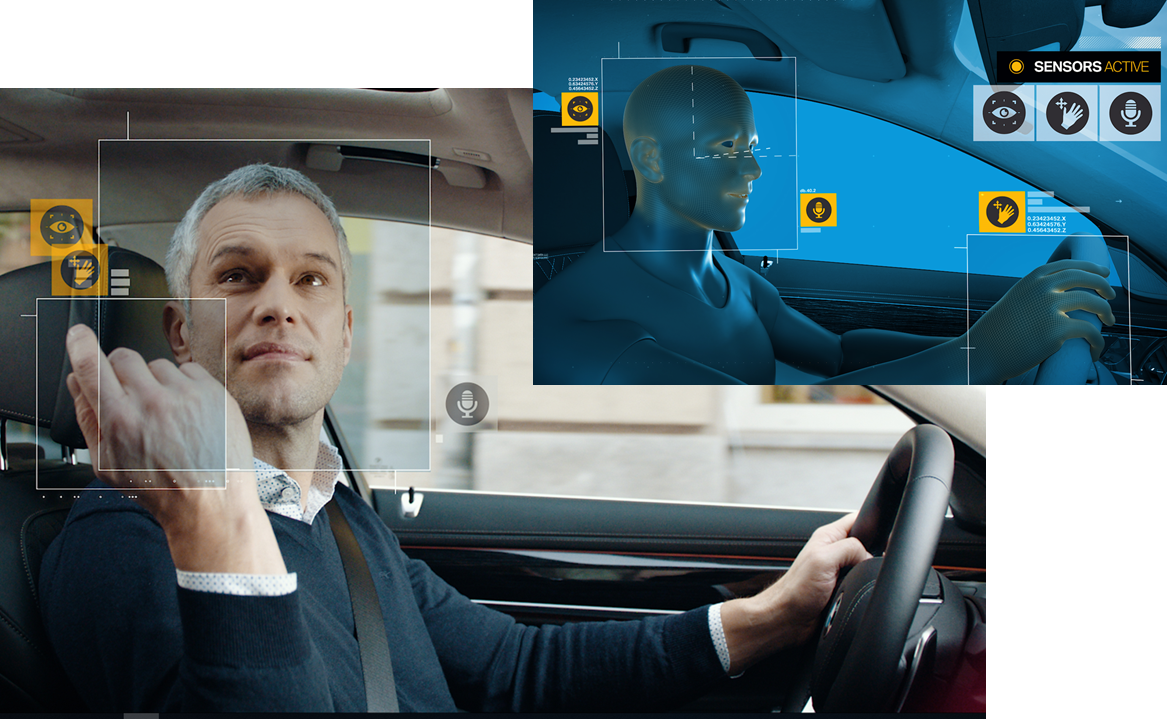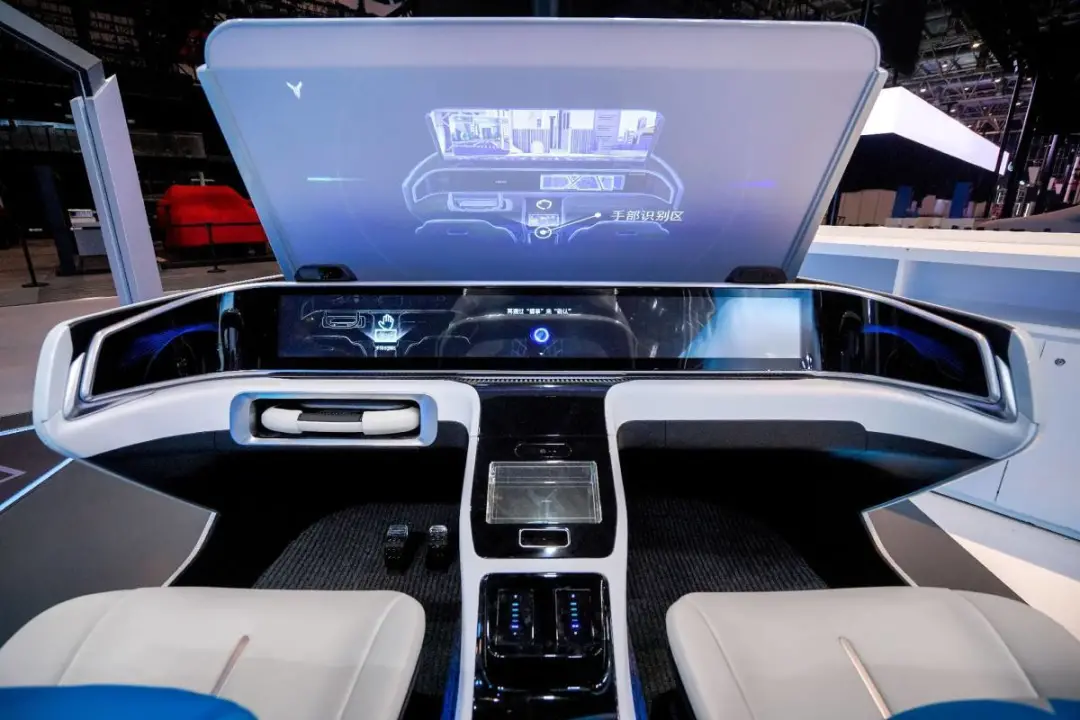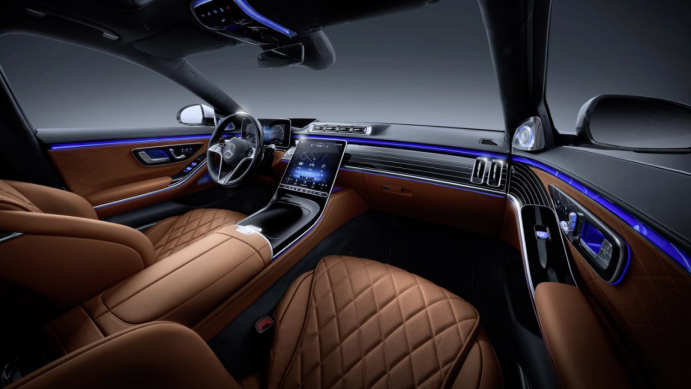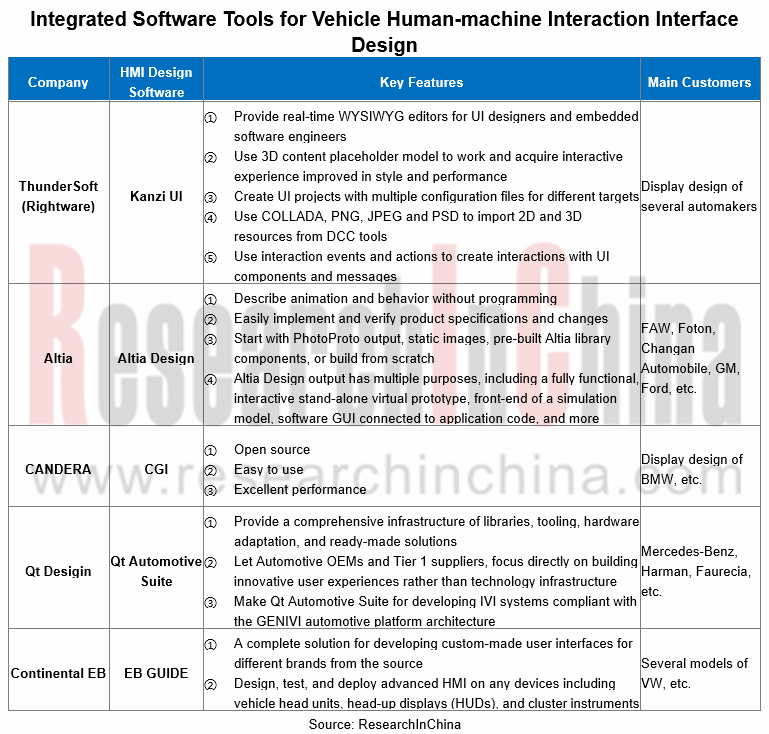Outperforming conventional one in intelligence and comfort, intelligent cockpit is born with the availability of more and more electronics onto vehicle and caters to the user’s needs better. It is evolving apace alongside rapid advances in new intelligence technologies and new materials.
It is analytically judged from major suppliers and their cockpits configured to new models as well as the cockpit configuration of concept cars launched in recent years that automotive intelligent cockpit design will be headed in directions below:
1. Intelligent cockpit will bear richer versatilities.
The upgrade of automotive electronics brings functional build-up of new products. Also, new features like driver monitor system (DMS), driving recorder, rear row entertainment display and co-pilot entertainment display enrich intelligent cockpit.
What’s more, the use of intelligent surface and multiple sensors in vehicle cockpit gives more scope to versatile cockpit design. For instance, window is not only a shelter from wind and rain but also an information display. HUD, sunroof and seat material can be used for displaying vehicle and entertainment information.
2. Multi-channel, fused interaction will become a mainstay in human-vehicle interaction.
Apart from button, touch and voice, human-vehicle interaction modes like voice assistant, gesture recognition, fingerprint, sound localization, face recognition and holographic image have been found in vehicle models launched. For example, BMW Natural Interaction, a new interaction system planned to be available to new iNext in 2021, seamlessly integrates with voice and gesture control and gaze recognition, which allows the driver to choose what they want in the interaction system; all-new Mercedes-Benz S-Class released in September 2020, features an upgraded gesture recognition capability that enables gesture control over center console, and recognition of face direction and body language via the in-vehicle camera to open the function as needed.

BMW Natural Interaction System

Vision BMW i Interaction EASE Cockpit BMW displayed at CES 2020
Safety should be first taken into account in design of a simpler, easy-to-use vehicle cockpit which acts as a human-vehicle interaction interface. Hopefully, multi-channel, fused interaction modes involving fabrics interaction, window interaction, intelligent headlight interaction, iris recognition and lip reading recognition are expected to be seen in intelligent vehicles, delivering an ever better user experience.
3. 3D, multiple screen, large-size display and diversified layout will hold the trends for intelligent cockpit display.
In an age of scenario-based interaction, cockpit layout no longer follows the same pattern. Center console integrated display designs from dual-screen and triple-screen to quint-screen display, for example, have been adopted by quite a few OEMs in 2020, besides usual console and cluster designs. Moreover, new displays including control screen, co-pilot entertainment screen, rear row display and transparent A-pillar have also been deployed in cars in a new way. In 2019 NeZha U added a transparent A-pillar; a virtual rearview mirror is mounted on the door of 2020 Audi e-tron Sportback at the driver’s side. These new designs are far and away new highlights for new cars.

At Auto China 2020, Audi showed an electronic rearview mirror display mounted on the door at the driver’s side

At Auto China 2020, Voyah displayed Ifree concept car which is outfitted with surround screen, control display mode and retractable steering wheel
4. “User experience”-centric cockpit scenario-based interaction modes will become pervasive.
For in-vehicle scenario-based interaction modes, new models on the market deliver simple scenario interactions with smart configurations from voice and ambient light to smart seat and in-car cameras. Take Mercedes-Benz S-Class introduced in September 2020 as an example. The model’s active ambient lighting that enshrines 263 LEDs automatically projects a bright red animation as a warning throughout the cabin when necessary, and gives real-time lighting feedback when the driver controls the air-conditioning system and “Hey Mercedes” voice assistant. As new technologies mature and come into use, vehicle interior space will vary with scenarios to meet the users’ needs. And in-vehicle scenario modes (e.g., driving, rest and office) will change to build an intelligent, connected, flexible, comfortable personal interior space.

Mercedes-Benz S-Class rolled out in September 2020 carries the active ambient lighting with 263 LEDs.
Additionally, the ever upgraded intelligent connectivity system enables availability of such features as voice-activated shopping, WeChat vehicle version and Alipay applets onto vehicles. Scenario-based interactions between the inside and outside of vehicles make vehicles a third space.
5. The maturing new materials for intelligent surfaces will likely enable every surface with interaction ability.
In the Vision BMW i International EASE cockpit, the seats covered by 3D knitted fabric interactive materials allows for touch control over functions. Yanfeng Global Automotive Interior Systems Co., Ltd.’s XiM21 smart cockpit combines digital technology, lighting and physical materials to realize touch switch and create ambience. There are several optional surface materials such as crystal, wood grain and fabric. The touch switch applies pressure sensing technology to ensure safety. The display module is composed of fabric decorative surface and ambient light, differing from common physical buttons.

Interactive surface control switch on the seat in Yanfeng XiM21 smart cockpit
6. Touch feedback will be a key technology for higher level of safety.
Automotive HMI design follows the principle of lowering the level of driver’s distraction and making input and output of vehicle data more effective. As virtual touch buttons/switches find broader application in vehicles, touch feedback technology becomes a crucial way to improve safety. As start-ups such as Tanvas, Immersion, Boréas Technologies and Aito are deploying the technology, major tier-1 suppliers like Continental, Valeo and Bosch also race to make presence.
Bosch’s proprietary “NeoSense” touchscreen gives haptic feedback to users. With buttons on the screen touch as real ones, frequent users even don’t need to see the display to complete operation.
7. Software system will play as a key means to differentiate cockpits.
Android system has enriched IVI system scenarios and provides more personalized human-machine interfaces in efforts to make a rapider expansion in the automotive market, amid simultaneous iterations of software and hardware. To this end, vehicle software providers keep trying to sharpen their software tools and provide more efficient services for OEMs and suppliers. Based on useful functions, human-vehicle interaction interface design does not go into a rut. Some innovative UI designs like 3D vision, visualized, young, flat and card style designs have been found in new vehicles.

Autonomous Driving Domain Controller and Central Computing Unit (CCU) Industry Report, 2025
Research on Autonomous Driving Domain Controllers: Monthly Penetration Rate Exceeded 30% for the First Time, and 700T+ Ultrahigh-compute Domain Controller Products Are Rapidly Installed in Vehicles
L...
China Automotive Lighting and Ambient Lighting System Research Report, 2025
Automotive Lighting System Research: In 2025H1, Autonomous Driving System (ADS) Marker Lamps Saw an 11-Fold Year-on-Year Growth and the Installation Rate of Automotive LED Lighting Approached 90...
Ecological Domain and Automotive Hardware Expansion Research Report, 2025
ResearchInChina has released the Ecological Domain and Automotive Hardware Expansion Research Report, 2025, which delves into the application of various automotive extended hardware, supplier ecologic...
Automotive Seating Innovation Technology Trend Research Report, 2025
Automotive Seating Research: With Popularization of Comfort Functions, How to Properly "Stack Functions" for Seating?
This report studies the status quo of seating technologies and functions in aspe...
Research Report on Chinese Suppliers’ Overseas Layout of Intelligent Driving, 2025
Research on Overseas Layout of Intelligent Driving: There Are Multiple Challenges in Overseas Layout, and Light-Asset Cooperation with Foreign Suppliers Emerges as the Optimal Solution at Present
20...
High-Voltage Power Supply in New Energy Vehicle (BMS, BDU, Relay, Integrated Battery Box) Research Report, 2025
The high-voltage power supply system is a core component of new energy vehicles. The battery pack serves as the central energy source, with the capacity of power battery affecting the vehicle's range,...
Automotive Radio Frequency System-on-Chip (RF SoC) and Module Research Report, 2025
Automotive RF SoC Research: The Pace of Introducing "Nerve Endings" such as UWB, NTN Satellite Communication, NearLink, and WIFI into Intelligent Vehicles Quickens
RF SoC (Radio Frequency Syst...
Automotive Power Management ICs and Signal Chain Chips Industry Research Report, 2025
Analog chips are used to process continuous analog signals from the natural world, such as light, sound, electricity/magnetism, position/speed/acceleration, and temperature. They are mainly composed o...
Global and China Electronic Rearview Mirror Industry Report, 2025
Based on the installation location, electronic rearview mirrors can be divided into electronic interior rearview mirrors (i.e., streaming media rearview mirrors) and electronic exterior rearview mirro...
Intelligent Cockpit Tier 1 Supplier Research Report, 2025 (Chinese Companies)
Intelligent Cockpit Tier1 Suppliers Research: Emerging AI Cockpit Products Fuel Layout of Full-Scenario Cockpit Ecosystem
This report mainly analyzes the current layout, innovative products, and deve...
Next-generation Central and Zonal Communication Network Topology and Chip Industry Research Report, 2025
The automotive E/E architecture is evolving towards a "central computing + zonal control" architecture, where the central computing platform is responsible for high-computing-power tasks, and zonal co...
Vehicle-road-cloud Integration and C-V2X Industry Research Report, 2025
Vehicle-side C-V2X Application Scenarios: Transition from R16 to R17, Providing a Communication Base for High-level Autonomous Driving, with the C-V2X On-board Explosion Period Approaching
In 2024, t...
Intelligent Cockpit Patent Analysis Report, 2025
Patent Trend: Three Major Directions of Intelligent Cockpits in 2025
This report explores the development trends of cutting-edge intelligent cockpits from the perspective of patents. The research sco...
Smart Car Information Security (Cybersecurity and Data Security) Research Report, 2025
Research on Automotive Information Security: AI Fusion Intelligent Protection and Ecological Collaboration Ensure Cybersecurity and Data Security
At present, what are the security risks faced by inte...
New Energy Vehicle 800-1000V High-Voltage Architecture and Supply Chain Research Report, 2025
Research on 800-1000V Architecture: to be installed in over 7 million vehicles in 2030, marking the arrival of the era of full-domain high voltage and megawatt supercharging.
In 2025, the 800-1000V h...
Foreign Tier 1 ADAS Suppliers Industry Research Report 2025
Research on Overseas Tier 1 ADAS Suppliers: Three Paths for Foreign Enterprises to Transfer to NOA
Foreign Tier 1 ADAS suppliers are obviously lagging behind in the field of NOA.
In 2024, Aptiv (2.6...
VLA Large Model Applications in Automotive and Robotics Research Report, 2025
ResearchInChina releases "VLA Large Model Applications in Automotive and Robotics Research Report, 2025": The report summarizes and analyzes the technical origin, development stages, application cases...
OEMs’ Next-generation In-vehicle Infotainment (IVI) System Trends Report, 2025
ResearchInChina releases the "OEMs’ Next-generation In-vehicle Infotainment (IVI) System Trends Report, 2025", which sorts out iterative development context of mainstream automakers in terms of infota...